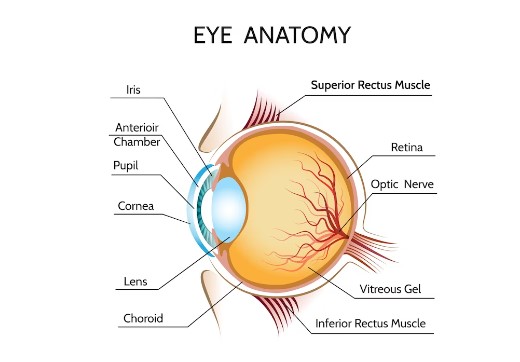The human eyes are a marvelous creation, giving us the incredible ability to "see" the world around us. But have you ever wondered how exactly our eyes work to convert light into images that our brain can interpret? In this article, we will delve into the intricate process of how our eyes enable us to perceive the visual wonders of the world.
1. The Anatomy of the Eye
To understand how our eyes enable vision, let’s first familiarize ourselves with their structure. The eyes are complex organs, consisting of various parts that work together harmoniously. The key components include the cornea, iris, lens, retina, and optic nerve.
The cornea is the transparent outermost layer that covers the front part of the eye. It plays a crucial role in refracting light and protecting the eye from dust and foreign objects. Behind the cornea lies the iris, which controls the amount of light entering the eye by adjusting the size of the pupil.
The lens sits behind the iris and is responsible for further focusing the incoming light onto the retina. The retina, located at the back of the eye, contains specialized cells called photoreceptors that detect light. These photoreceptor cells, known as rods and cones, are the key players in the visual process.
The optic nerve, originating from the retina, transmits electrical signals generated by the photoreceptors to the brain for interpretation. Now that we have a basic understanding of the eye’s anatomy, let’s explore how the visual process unfolds.
2. The Process of Vision
Vision begins when light enters the eye through the cornea and passes through the pupil, which is controlled by the iris. The incoming light rays then travel through the lens, where they are refracted to converge onto the retina.
The rods and cones in the retina are responsible for detecting light and converting it into electrical signals. Rods are highly sensitive to light and allow us to see in dim lighting conditions, while cones are responsible for color vision and work best in bright light.
When light strikes the rods and cones, a complex chemical reaction occurs, triggering an electrical impulse. These electrical signals are then sent through the optic nerve to the brain for processing. The brain decodes and interprets these signals, resulting in the perception of sight.
It is worth noting that the rods and cones are not evenly distributed across the entire retina. The central part, called the macula, contains a high concentration of cones, which gives us sharp and detailed central vision. On the other hand, the peripheral retina is rich in rods, providing us with better peripheral vision but with reduced ability to distinguish fine details and colors.
3. The Role of the Brain in Vision
While the eyes play a crucial role in capturing and transmitting visual information, it is the brain that ultimately makes sense of what we see. Once the electrical signals reach the brain via the optic nerve, they are processed and combined with information from our other senses.
The brain’s visual cortex, located in the occipital lobe, is responsible for analyzing and interpreting the electrical signals. It extracts features such as shape, color, motion, and depth from the incoming signals, allowing us to perceive the world in all its visual glory.
Moreover, the brain employs a remarkable mechanism called visual perception to fill in the gaps in our visual field. This mechanism compensates for blind spots and visual limitations, ensuring a seamless and coherent visual experience.
4. The Wonders of "Seeing"
The intricate process of vision, from the initial capture of light by the eyes to the interpretation by the brain, is nothing short of remarkable. Our eyes work effortlessly and continuously, allowing us to experience the vibrant colors, breathtaking landscapes, and captivating details of the world.
The ability to see is not limited to enhancing our aesthetic appreciation; it also plays a crucial role in our daily lives. From reading text to recognizing faces, our eyes enable us to navigate the world, communicate effectively, and experience the beauty surrounding us.
In conclusion, the eyes are magnificent sensory organs that allow us to see and perceive the world. The complex interaction between the cornea, iris, lens, retina, optic nerve, and brain ensures that we can make sense of the abundant visual stimuli in our environment. So, let us cherish this incredible gift of sight and continue to explore the wonders that unfold before our eyes every day.
Note: This article is for informational purposes only and does not constitute medical advice. If you have any concerns about your vision, please consult a qualified healthcare professional.




